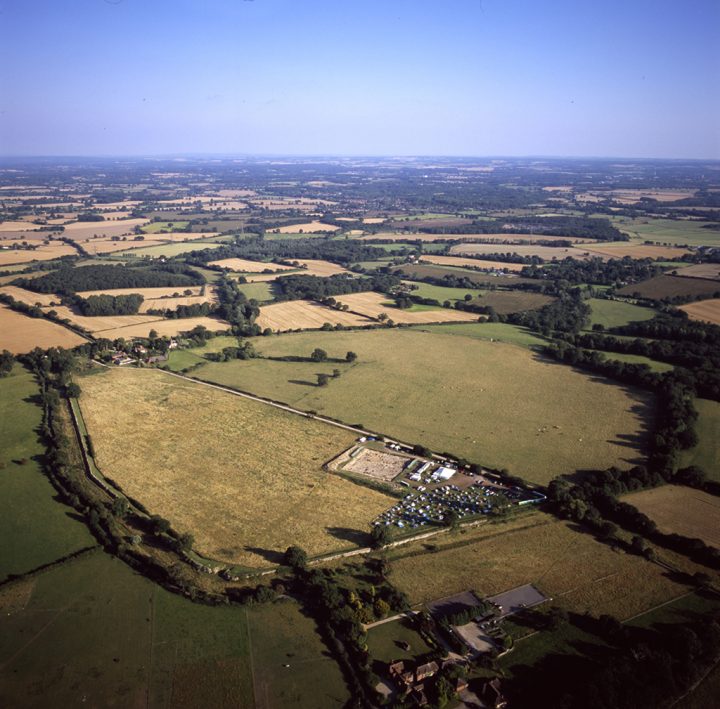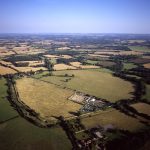About
The Roman name for Silchester was Calleva Atrebatum which denotes its role as the centre of the territory of the Atrebates, one of the major late Iron Age tribes in southern Britain.
Silchester was one of the main towns of Roman Britain and stands at the junction of a number of major routes leading to other urban centres. It is unusual in that, unlike comparable Roman cities such as London, Winchester and Chichester, Silchester never re-emerged as a town in the later Anglo-Saxon period. The site was abandoned after the Roman period, the existence of a city beneath the fields indicated only by the surrounding town walls and, in dry weather, by the lines of the street grid appearing in the pasture and revealing the town blocks (insulae). Find out more about Silchester….
The Location
 The town was built on an easily defensible spur of gravel about 90m above sea level, with commanding views to the east and south and the only access over level ground from the west.
The town was built on an easily defensible spur of gravel about 90m above sea level, with commanding views to the east and south and the only access over level ground from the west.
It was originally surrounded on three sides by woodland, growing on the heavy clay soils, and this aspect of the site is enshrined within the Celtic name, which can be translated as (the town in the) woods of the Atrebates.
While the surrounding woodland provided fuel and building materials and hindered easy access to the settlement, the gravel spur itself was more easily cleared for cultivation and building by the first occupants. As the numerous wells on the site demonstrate, water was abundant from about 3-4m below ground surface and from springs around the edge of the gravel.
Meet our team
Who’s who at Silchester
The history of the site
A brief guide to the town from the Iron Age to the present
Visit us
How to visit our summer excavations plus what the town has to offer year-round
Our Projects
Over the years, our team have been involved in a number of different projects with varying themes and objectives based in and around Silchester
English Heritage Guidebook: Silchester Roman Town
This new guidebook, authored by Mike Fulford, provides a full tour and history of the site, and brings the story of its rediscovery and excavation up to date. The guidebook is available to order online.


